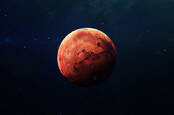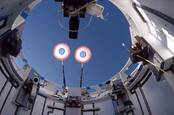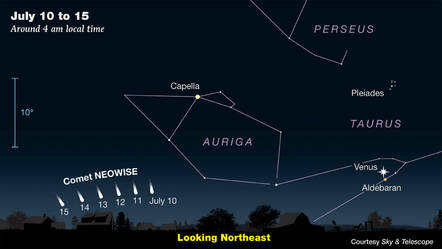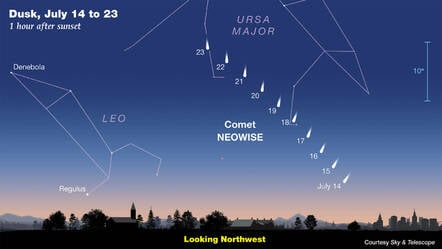If the Solar System's 'Planet Nine' is actually a small black hole, here's how we could detect it... wait, what?
There may be a small black hole on the edge of our Solar System? 2020, please stop
The suggestion that the Solar System's hypothesized Planet Nine is actually a small black hole could be supported by searching for outbursts of energy using the Vera Rubin Observatory, scientists say.
The observatory, previously known as the Large Synoptic Survey Telescope (LSST), has been under construction in Chile since 2015, and is expected to begin observing the heavens this year. It will be home to a giant telescope that employs a “three-mirror, three-lens optical assembly” to focus light from the night’s sky onto the “world’s largest CCD camera.”
Avi Loeb and Amir Siraj, chairman of the Department of Astronomy and an undergraduate student, respectively, at Harvard University believe the new telescope will be able to determine whether or not Planet Nine, a hypothetical object, may be a black hole or not within a year of the instrument becoming operational.
Planet Nine, if it exists, has remained elusive since it was predicted by a pair of astronomers at the California Institute of Technology in 2015. Fruitless searching for the strange body has led some scientists to believe it’s not visible at all because it may, in fact, be a black hole.
Loeb and Siraj have come up with a method to detect Planet Nine if, of course, it really is a black hole estimated to mass something in the order of five to ten Earth-sized planets. Their approach is described in a paper expected to appear in The Astrophysical Journal – a pre-print version is here. The abstract summarizes the method thus:
Planet Nine has been proposed to potentially be a black hole in the outer solar system. We investigate the accretion flares that would result from impacts of small Oort cloud objects, and find that the upcoming LSST observing program will be able to either rule out or confirm Planet Nine as a black hole within a year.
What that means is, their technique involves spotting luminous flares erupting at the outer edge of our Solar System. These bursts will be produced whenever the black hole, if it exists, gobbles up any comets and other stuff that flies too close to the proposed swirling disk of gas and dust.
"In the vicinity of a black hole, small bodies that approach it will melt as a result of heating from the background accretion of gas from the interstellar medium onto the black hole," said Siraj. "Once they melt, the small bodies are subject to tidal disruption by the black hole, followed by accretion from the tidally disrupted body onto the black hole."
In other words, matter flying towards Planet Nine will get pulled apart and swallowed, if it is a black hole. The interaction produces electromagnetic energy that signals the potential presence of this invisible void.
"Because black holes are intrinsically dark, the radiation that matter emits on its way to the mouth of the black hole is our only way to illuminate this dark environment," said Loeb.
The new telescope has a wide-field view that can search for these random flashes of light in outer space. "LSST has a wide field of view, covering the entire sky again and again, and searching for transient flares," said Loeb. "Other telescopes are good at pointing at a known target but we do not know exactly where to look for Planet Nine. We only know the broad region in which it may reside," Siraj added.



















Wed 8 Jul 2020